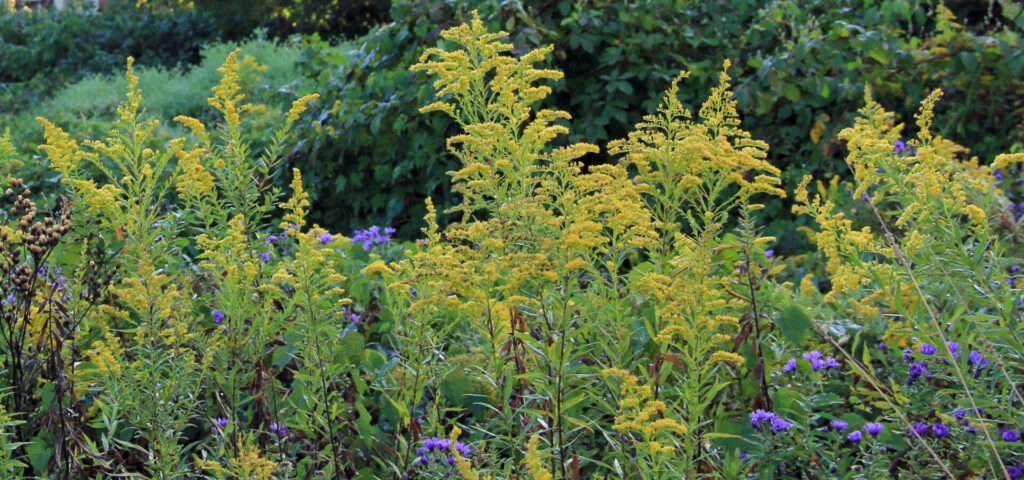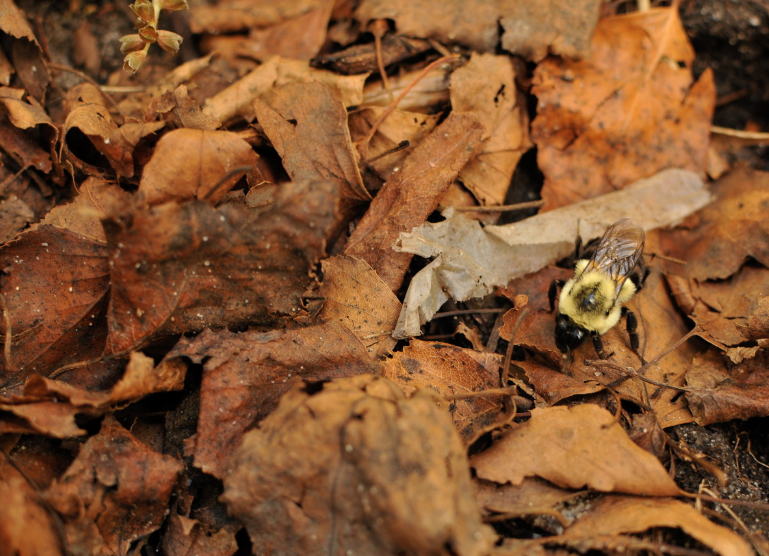
It’s nearing the end of the growing season here in Western Pennsylvania. The nights get chilly, the wildflowers and herbaceous plants, once fragrant and colorful, will start to turn brown and woody, and bright leaves will fall to the ground and collect in piles.
For some homeowners and landscapers this autumn display is seen as an extra chore: trimming all the dead stems of their wildflower gardens, raking leaves and mulching them, or even bagging them in giant plastic garbage bags to be thrown away.
But what if I told you that you could skip those end-of-season chores – and save our native pollinators and songbirds!
Leaves and Stems: Pollinator’s Winter Blanket and a Songbird Snack!

Native pollinators like bees, flies, butterflies, moths and beetles use the hollow centers of dead stems (pith region) and the piles of dead leaves and organic plant material as their winter home. Hiding in stems and leaves, these critters are protected from predators, extreme weather, and cold temperatures while they are in their egg or larval stage. They will then emerge as adults come spring and pollinate again, starting the cycle all over!
Native songbirds also appreciate a delayed cleanup and cutting back of gardens and stems. Songbirds eat seed heads and hide from predators in thick mats of dying plant matter and stem piles. Increasing insect populations in fallen leaves also provides a food source for songbirds that feed on insects.
Free Mulch and Fertilizer!
Allowing dead organic matter (leaves and plants) to decompose in your yard also creates nutrient rich soil! Dead organic material is the building block for quality top soil. You can still tidy up your yard, but just pile your dead leaves around tree trunks and in garden beds to create a free mulch!
Don’t shred the leaves you collect, as this could potentially harm any insect eggs or larva that are already present. Leaves covering garden beds can also prevent weed growth at the beginning of spring, so you’ll save lots of time on spring weeding!
Just Be Mindful
The only caveat to using leaves as a mulch is to be mindful of clogging storm drains. If you are a home gardener with herbaceous plants in your garden, be careful they aren’t smothered. Some plants prefer a thinner layer of mulch, so they receive more airflow and can easily emerge in the spring.

